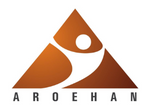आरोहन आणि आदिवासींच्या जटील समस्या
आरोहनच्या कामाची माहिती करून घेणे ओघानेच आले, कारण आरोहनने विश्वस्त म्हणून त्यांच्या समितीत मला सामावून घेतले. जव्हार-मोखाडा हे आरोहनचे कार्यक्षेत्र. जव्हारला जायचं म्हणजे मनोरपुढे उजवीकडे निघणारा विक्रमगडचा रस्ता धरायचा. तिथून पुढे जव्हार. अंतर तसं फार नाहीये, पण रस्ता इतका खड्डेवाला की आपला उत्साह निम्माशिम्मा व्हावा. किंवा आपल्यापुढे काय वाढून ठेवलंय त्याची जाणीव करून देणारा. कारण खड्ड्यांनी बसणारे धक्के सौम्य म्हणावेत असे धक्के खेड्यातील परिस्थिती पाहता बसतात.
जव्हारला आरोहनचे कार्यालय आहे तिथलं काम उरकून धारेच्या पाड्याकडे निघालो. तुम्ही जर ‘धारेचा पाडा’ असा गुगलवर शोध घेतलात तर तुम्हाला काहीही माहिती मिळणार नाही. धारेचा पाडा साखरी ग्राम पंचायतीत मोडतो. इथली वस्ती तर आदिवासींचीच आणि ती ही अगदी थोडी. कोणी तरी म्हणाले की हजारहून अधिक नाहीये. मला तर वाटलं की तेव्हढीही नसावी.
“तिची स्कूटर दिसत्ये म्हणजे रेश्मा पोचली आहे; इथेच ‘माता-बैठक’ आहे.” माधुरी म्हणाली. गाडी थांबली. समोरच एक छोटं आणि बैठं घर होतं, आत गेल्यावर ध्यानात आलं की ते एक छोटं सभागृह होतं. म्हणजे एक खोलीच. केवळ ह्याच कारणासाठी बांधलेली! साधारण १८ बाय १८ ची. आत ‘माता-बैठक’ चालली होती. रेश्मा वीस-पंचवीस आदिवासी महिलांना माहिती देत होती. काही महिला त्यांची मुले घेऊन आल्या होत्या. मी, माधुरी व डॉ. शुभा त्यांच्यात सामील झालो. माधुरी विविध प्रोजेक्टवर देखरेख करते तर डॉ शुभा म्हणजे आरोहनच्या चीफ ऑपरेटिंग ऑफिसर.
मोखाड्यात १६९ बालकांचा कुपोषणामुळे मृत्यु झाल्याची बातमी २००६ साली आली तेव्हा अंजली कानिटकर व डॉ हेलन जोसेफ यांनी त्वरित ‘आरोहन’ची स्थापना केली ती जव्हार मोखाड्यात आदिवासींच्या पाड्यात जाऊन त्यांच्या स्वास्थ्यासाठी काम करायच्या उद्देशाने. (अनेक प्रश्नांचे पदर एकमेकात गुंतलेले असल्यामुळे केवळ ‘स्वास्थ्य’ किंवा ‘आरोग्य’ अश्या एकाच प्रश्नावर काम करून भागणार नव्हते, तर सर्वांगीण विकासावर लक्ष्य केंद्रित करावे लागणार होते, त्यामुळे कामाची दिशा नंतर बदलण्यात आली.)
“हे माता-बाल सुरक्षा कार्ड. नोंदणी झाल्यावर लगेच मिळते. ही तर गरोदरपणाची कुंडलीच आहे!” रेश्मा माता-बैठकीतल्या स्त्रियांना सांगत होती. “नोंदणीपासून डिलिवरी व लसीकरणापर्यंत सर्व माहिती त्यात असते.”
“हे तीन रंग बघा, हिरवा, पिवळा आणि लाल. काय वाटतं तुम्हाला? तुमचं बाळ ह्यापैकी कुठल्या रंगात असलं पाहिजे?”
“हिरव्या”
“फार छान. आपलं बाळ हिरव्या रंगात येण्यासाठी काय करावं लागेल?” रेश्माने रोख आता आहाराकडे वळवला. सुदृढ बालकाला आहार ‘तिरंगा’ – लाल रंगाचे टोमाटो, गाजर, पांढऱ्या रंगाचे दुध, भात, अंडी व हिरव्या भाज्या – असा तिरंगा आहार कसा द्यावा ते रेश्मा सांगू लागली. “तिरंगा आहार घ्यायला तुम्हाला लांब जायची जरूर नाही, हे सर्व घटक तुमच्या आजूबाजूला आहेतच.”
“इथे अजूनही अनेक बालकं अंडर-वेट असतात.” शुभा मला म्हणाली. “प्रश्न केवळ आहाराचाच नाही तर चुकीच्या समजुतींचा देखील आहे. आदिवासी समाजात अनेकदा गरोदर स्त्रिया पेज पिऊन राहतात. मग त्या ‘अॅनिमिक’ होतात. कसे आरोग्य राहिल त्यांचे; कशी वाढ होईल बाळाची?”
तुम्ही इंटरनेटवर शोधलं तर टाटा सामाजिक संशोधन संस्थेतील दोघांचा एक अभ्यासपूर्ण लेख सापडेल. ‘२००५ मध्ये केवळ पालघर जिल्ह्यातच ७१८ बालकांचा मृत्यू कुपोषणामुळे झाला. २०१६ मध्ये ६०० पेक्षा अधिक मुले दगावली.’ त्या दोघा संशोधकांनी ३७५ मुलांचा अभ्यास केला. त्यात ५९% मुलांची वाढ खुंटली असल्याचे निष्कर्ष त्यांनी काढले.
“इथे मुलींचे शिक्षण फार होत नाही. सातवीनंतर अनेकदा शिक्षण थांबतेच. मुलगी पंधरा सोळा वर्षांची झाली की तिचे लग्न होते. मग ती गरोदर राहते. हे सर्व मोठेच प्रश्न आहेत.”
“काल-परवांच पेपरात वाचलं की चौदा-पंधरा वर्षांची मुलगी आश्रम शाळेत गरोदर राहिली.”
“आश्रम-शाळेत मुले मुली एकत्र शिकतात, आणि तिथेच राहतात. तिथे मुलीने गरोदर होणे हे काही आश्चर्यकारक नाही. अनेकदा अश्या मुलींची लगेच लग्ने लावून दिली जातात. त्यांच्या समाजात तो फार मोठा विधी नसतो. मुलगी एक दिवशी मुलाच्या घरी जाते, बस्स!”
“इथे माता-बैठकीत ती मुलगी बघा. तिच्या हातात बाळ आहे. ती आई तर सोळा वर्षांची असेल-नसेल.”
“त्यांचंही कुपोषण होतं. अनेकदा अश्या मुली आपलं वय अठरा सांगतात. तरीही असं वाटतं की त्या लहान आहेत. लहान वयात माता होण्याचे अनेक दुष्परिणाम आहेत. केवळ सामाजिकच नव्हे तर शारीरिक देखील.”
रेश्मा महिलांशी त्यांच्या समस्यांबद्दल बोलू लागली. चतुराईने तिने चर्चा ग्रामसभेकडे वळवली आणि ‘महिला ग्रामसभेचे’ आयोजन करण्याचे महत्त्व पटवून दिले. पण मोठ्ठा अडसर तर महिलांनी आपल्या प्रश्नाबाबत बोलू लागण्याचा होता. रेश्मा महिलांचं मन वळविण्यात कांही प्रमाणात तरी यशस्वी ठरली, त्या बोलू लागल्या पाण्याच्या प्रश्नावर! “असे प्रश्न सोडवायलाच ग्रामसभा व पुढे ग्राम-पंचायत असते.”
महिलांनी सभेत बोलणे हा एक त्यांच्या मनातला मोठ्ठा अडसर आहे. तो पार करणे सोपे नक्कीच नाही.
आता रेश्माने चर्चेचा रोख स्थलांतराच्या समस्येकडे वळवला. आदिवासींच्या पाड्यात स्थलांतर ही एक प्रचंड मोठी समस्या आहे. केवळ शेतीवर जगता येत नाही, मग एक पीक काढले की शहराच्या दिशेने कूच!
“स्थलांतर अनेक रीतीने आयुष्य कुरतडते. कित्येक जण आपल्या वृद्ध माता-पित्यांना मागे सोडून जातात. मुलांच्या शिक्षणावर पाणी सोडावे लागते, आणि आरोग्याची आबाळ होते. संपूर्ण खेड्याच्या ‘इकोनोमी’वरच अपरिमित दुष्परिणाम होतोय.”
“आरोहनने शेतकऱ्यांना दुसरे पीक कसे घेण्यासाठी मार्ग दाखवले आहेत, मदत केली आहे. आज कित्येक शेतकरी तसे दुसरे पीक काढत आहेत.”
“काही विशिष्ट भागातील स्थलांतर पन्नास टक्के कमी करण्याचा मनसुबा आरोहनने ठेवला आहे, आणि ते देखील एक आवाक्याबाहेरचं उद्दिष्ट वाटतंय, यावरूनच कल्पना करा.”
मला आठवलं, रोटरीतर्फे आम्ही भिवंडीजवळ एक बंधारा बांधत होतो. मी बांधकाम चालू असताना तिथे गेलो तेव्हा तीन फुटाच्या काठ्या उभ्या करून कित्येक मजुरांनी संसार मांडला होता. “ते शेतीची कामं संपली की इथे कामासाठी येतात. होळीला परत आपल्या गांवी जातात,” बांधकाम कंत्राटदार मला सांगत होता. परतीच्या वाटेवर मी एका झाडाखाली स्थलांतरित कुटुंबाने थाटलेला संसार बघितला.
मी चालत्या गाडीतूनच फोटो काढला. माझ्यासारख्या शहरी वास्तव्य करणाऱ्यांना स्थलांतराचा प्रश्न किती मोठ्ठा आहे हे समजायला प्रत्यक्ष भिवंडी, मोखाडा अश्या भागात फिरायला हवे, आकडेवारी प्रश्नांची माहिती देते, पण त्याबाबत जाणीवा वाढवत नाही.
अत्यंत अस्वस्थ करणारी आणि गुंतागुंतीची परिस्थिती मी पहिली, आणि ती आपल्या समोर ठेवली आहे. कितीही काम केलं तरीही अपुरेच पडणार आहे. तरीही एकत्र येऊन ठोस पावलं उचलावीच लागतील. ते अपरिहार्यच आहे.
सरकार ही जगातली सर्वात अकार्यक्षम संस्था आहे यात वादच नाही. मग ते कोणत्याही पार्टीचे असो. अनेक कार्यक्रम पेपरवर आहेत, पण लाभार्थी त्यापासून वंचित आहेत हेच कटू सत्य आहे. आरोहनसारख्या संस्था कार्यरत आहेत हा दिलासा असला तरीही मुंबईपासून केवळ दीडशे किमीवर इतकी भयाण परिस्थिती असावी हा नेत्यांनी, व्यक्तींनी आणि समाजानेही कूपमंडूक वृत्ती ठेवल्याचा आणि आत्मकेंद्रित असल्याचा परिणाम आहे यात शंकाच नाही.
विवेक पटवर्धन













